







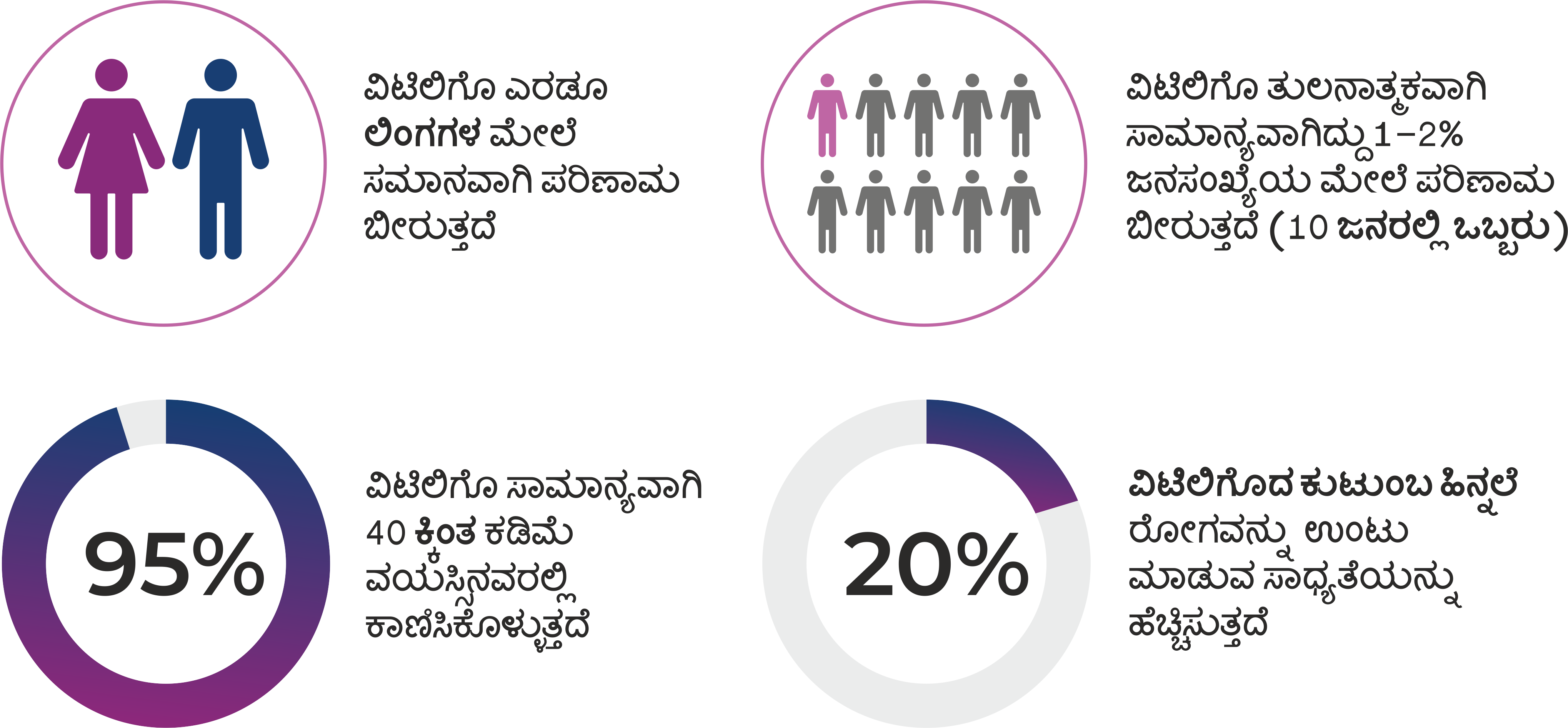
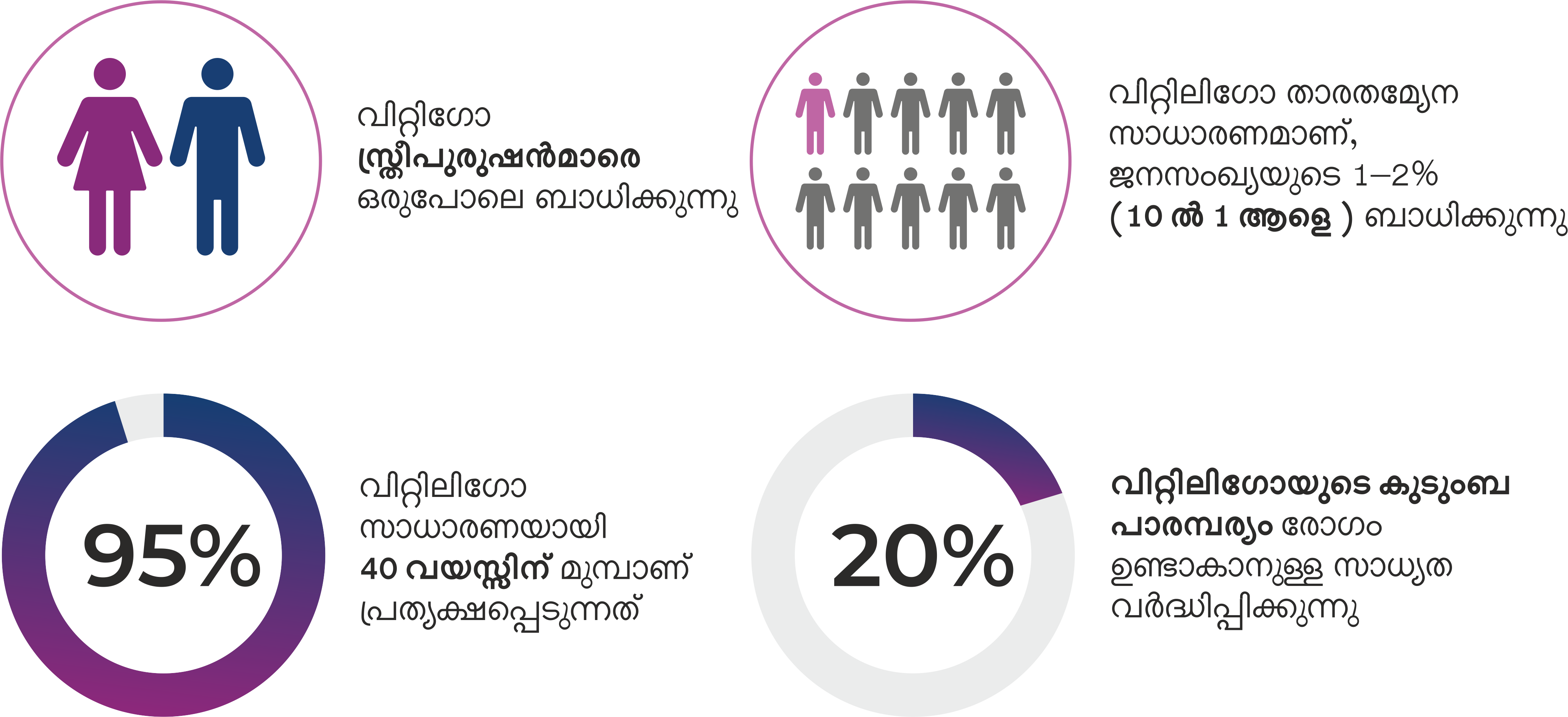
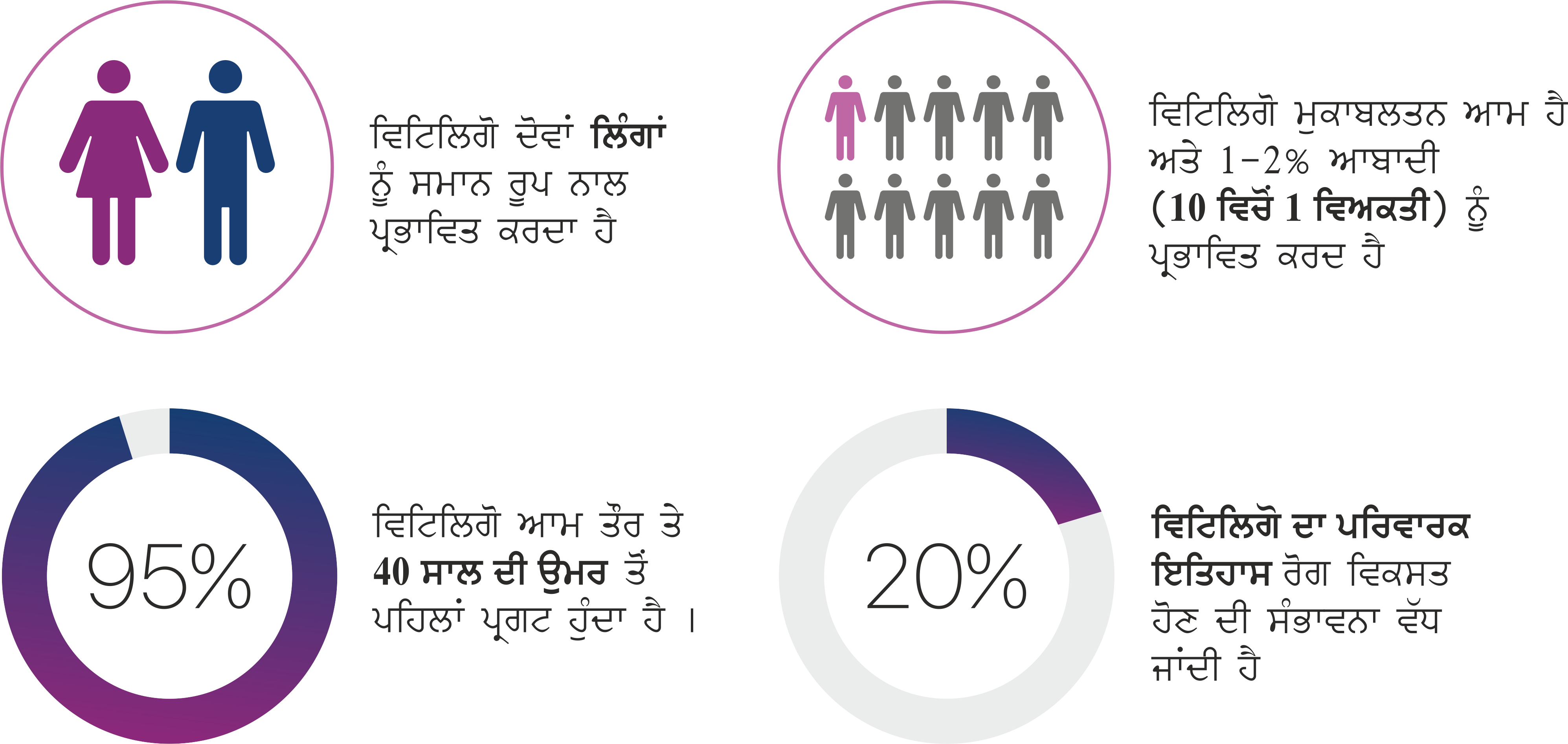





While the patches by themselves are not dry or flaky, they may itch from time-to-time. It generally affects the following areas and these are considered vitiligo early signs :
Insides and outsides of the mouth.
Knees and elbows
Armpits, fingers, and wrists
Groin and genitals.
Nostrils and eyes.
Belly button.
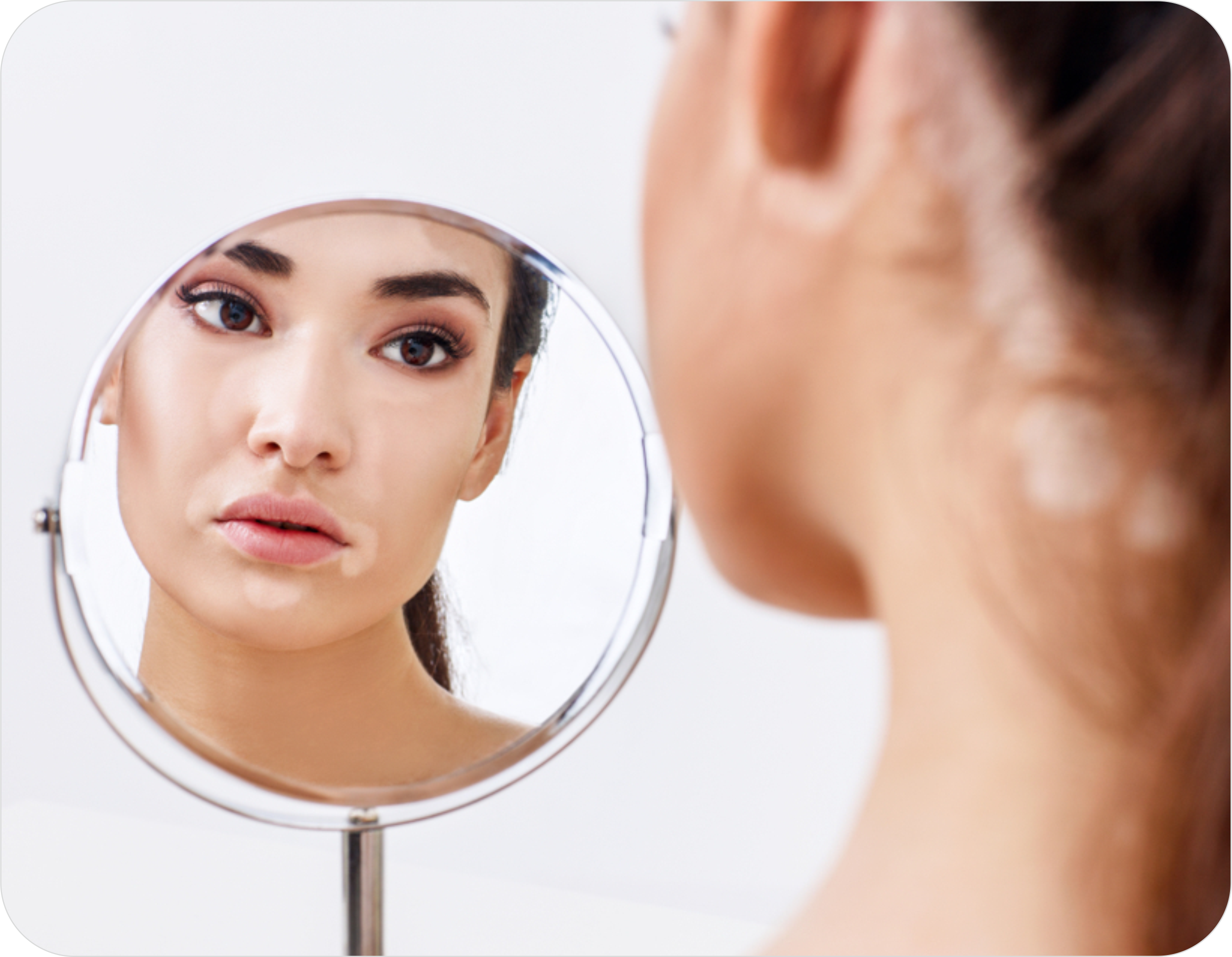
According to research, lip vitiligo constitutes about 16% of all vitiligo patients. In this case, the lips lose their colour. Vitiligo treatment for lips can stop the spread to an extent if detected early enough.
In terms of the diseaseʼs progression, here are the vitiligo symptoms in the order in which they usually appear:
It starts as a tiny spot or as a pale patch of skin, gradually turning completely white.
The centre of the patch is generally white with smooth/irregular edges and paler skin surrounding it
In cases where there are blood vessels under the skin, the patch may be slightly pink in appearance
It gradually spreads to other areas of the body if left untreated.

Vitiligo consists of two main types, namely:
Also known as unilateral or localized vitiligo, segmental vitiligo is less common in adults but more common in children.
This type of vitiligo tends to occur at a younger age, progresses for a year or two, and then stops entirely.
Here, white patches affect one specific area of the body and are not present anywhere else on the body.
This type affects around 9 in 10 people who have the condition.
It is characterized with symmetrical white patches on both sides of the body - similar to a mirror-image - including areas such as:
Backs of hands.
Arms, elbows, and knees.
The skin around the eyes.
Feet.





Vitiligo starts out as small white irregular patches, taking months or even, years to spread. In most cases, the white patches will continue to spread if left untreated.
.png)
A dermatologist makes diagnosis of vitiligo by doing:
Physical examination of white patches.
Skin biopsy.
Blood
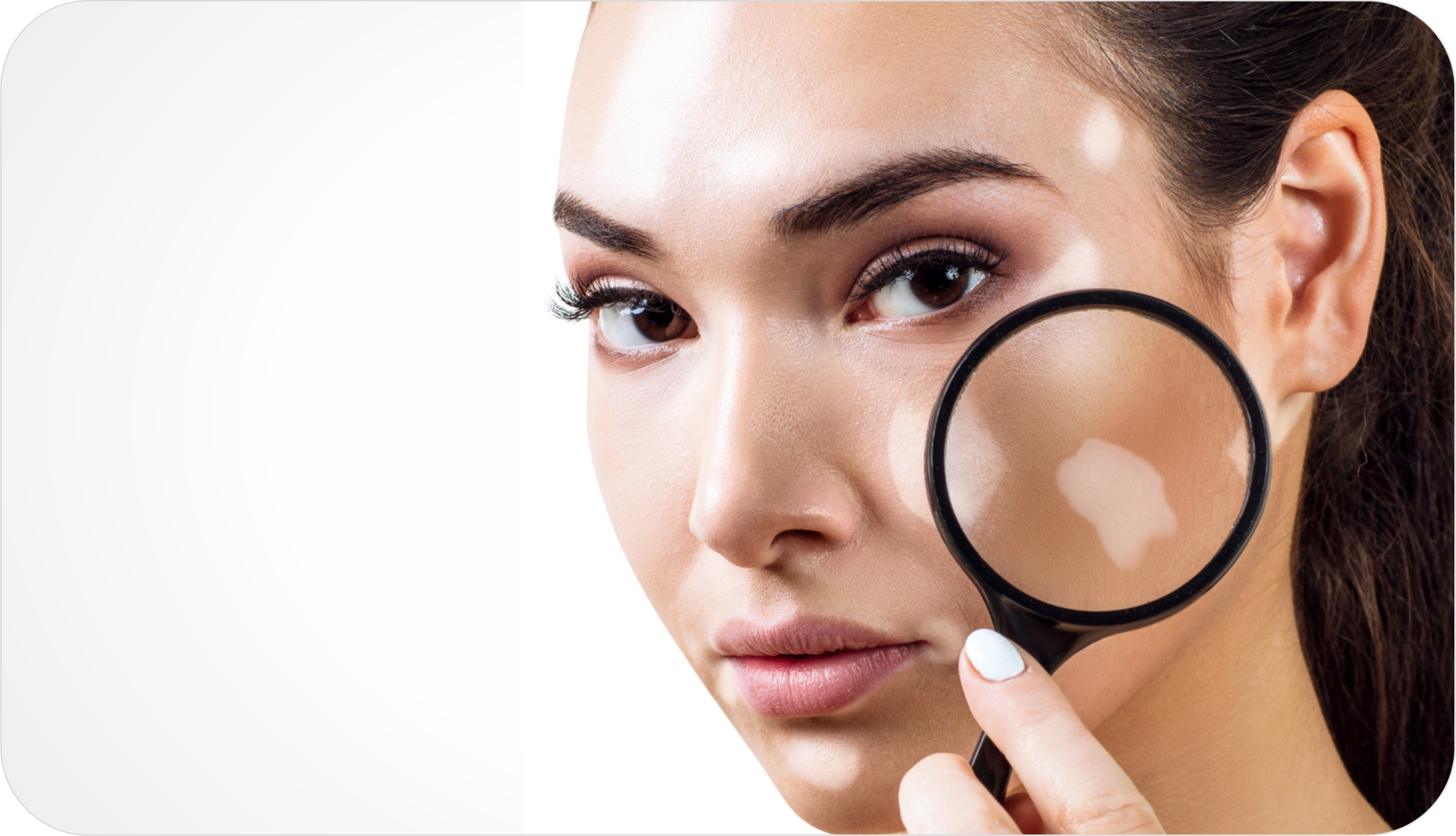
Like other diseases, vitiligo too can cause other health complications such as:
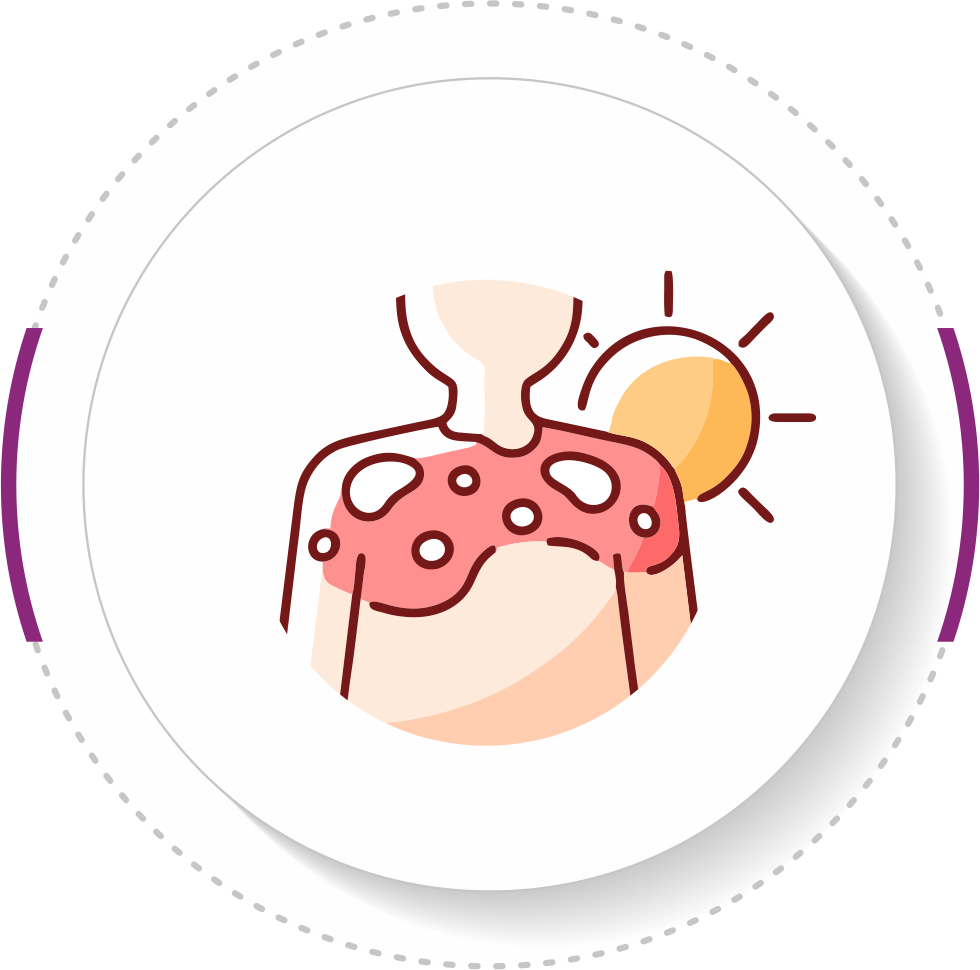
Increased vulnerability to sunburn as the affected areas may be frequently exposed

Eye problems like the inflammation of the iris or the middle layer of the eye that could potentially affect vision.

Partial loss of hearing.

Psychological/social distress, such as poor confidence and low self-esteem.
A dermatologist may prescribe a medication that focuses on stopping the disease process and improving the skinʼs appearance. In most cases, the goals of your treatment are to:
Slow or stop the disease from progressing.
Encourage the regrowth of skin pigment cells.
Restore color to the white patches of skin, which can help the skin color look more even
Categories of treatment options include:
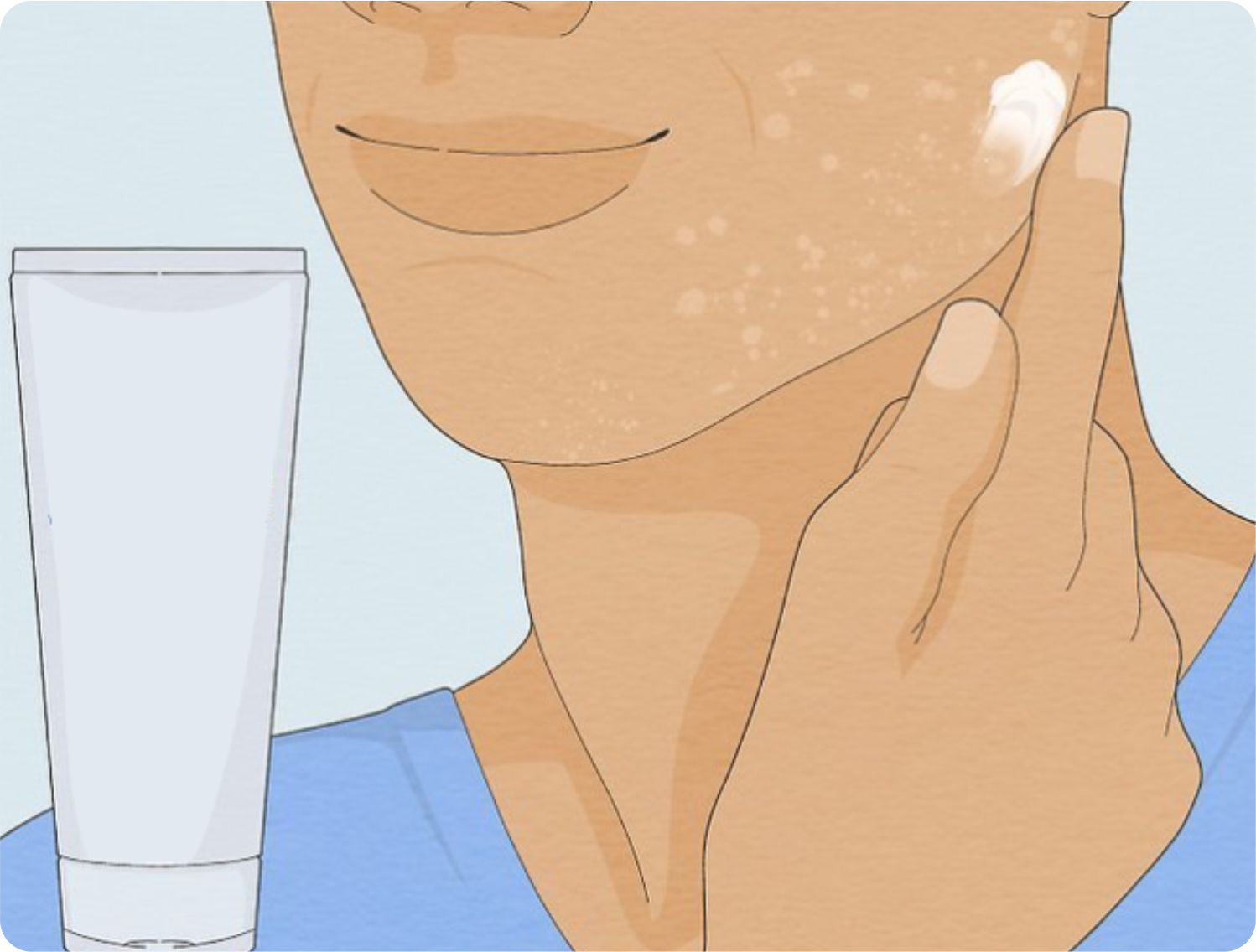
Medicines or medicated skin creams, such as corticosteroids or a calcineurin inhibitor.

Phototherapy, or light therapy, uses different types of ultraviolet lights to restore skin pigmentation.

Surgical techniques are required either to transfer pigment to depigmented area or depigmentation of dark area to even out the skin tone.
Living with vitiligo involves embracing one's uniqueness, seeking support when needed, and making choices that promote both physical and emotional well-being. With the right mindset and support system, many individuals with vitiligo lead fulfilling and meaningful lives

In addition to the treatments recommended by dermatologist, you can help manage the disease by:

Protecting your skin from the sun. Use sunscreen and wear clothes to help protect your skin from sunburn and long-term damage

Wearing cosmetics, such as self tanning lotions or dyes, to cover depigmented patches of skin. Talk to your doctor about which lotion or dye you should use

Learning about the disorder and treatments to help you make decisions about care

Talking with other people who have vitiligo.

Reaching out to family and friends for support.
Antioxidant - this includes Antioxidant enough amount of fruits and vegetables so that it keeps you fresh and active and prevent you from any allergy. It also helps the body to free radicals
Vegetables: need to take fresh green vegetables which includes French beans, radish, carrots, Spinach, Drumsticks etc
Fruits - it includes Mango, grape, walnut, dates etc.
Other food items include wheat, pure ghee, Almond, potatoes etc.
Orange, custard apple, guava, cashew nut, brinjal, Papaya, tomato, garlic.
There are some milk products which should be avoided are milk itself, curd and buttermilk.
Non-vegetarian foods which can be avoided are: Fish, red meat etc. Along with these food items the junk food also should be avoided.
Acidic foods, such as lemons, can increase the acid levels in your stomach. This imbalance can worsen your symptoms.
There are certain vegetables, that you should avoid is: tomatoes, white eggplant, potatoes and tobacco.
Processed foods should be avoided as much as possible.
Fast foods and soft drinks.
Camouflage improves the appearance of the individual, as the focus is no longer on the discoloration that the person wishes to hide, thereby improving their confidence and self-esteem. Camouflage may be permanent or temporary.
Permanent Camouflage is obtained with a cosmetic tattoo. Unlike pigments used for ritual or symbolic tattoos, cosmetic tattoos are inert iron oxides that are available in more than 15 shades.
Cosmetic results are strongly dependent on the doctor's or the technician's skill in perfectly matching the colour of the tattoo with the colour of the surrounding skin area.
The colours of the tattoo fade naturally over time, requiring periodic maintenance, usually 2–5 years.

Unless performed under universal precautions with scrupulous sterile technique, tattooing carries a risk of transmitting infectious diseases, including viral hepatitis and human immunodeficiency virus (HIV) infection .
The cosmetics that are used to cover up vitiligo are very different from other cosmetics. Spreading thin layers of certain dark cosmetics that contain light-reflecting ingredients over white spots is a very good way to cover them up or at least reduce their appearance.
There are four basic facial foundations:
1.
Oil-based foundations.
2.
Water-based facial foundations.
3.
Oil-free facial foundations.
4.
Water-free foundations are waterproof.
There are three basic approaches to basic camouflage cosmetics, i.e. contour correction, colour correction, or a combination of both.
Color abnormality camouflage: An opaque cosmetic can hide pigmentation problems. Using a complementary camouflage makeup to cover up uneven colouring is the best technique to disguise it.


Cleanse the skin.

Choose a make-up base closest to the natural skin color. Blend with other colors so as to match the skin tone.

Apply cream sparingly from the center (thin coat) of blemish and blend into normal skin. Wait for 5 min for setting of cream.

Translucent loose powder must be pressed on top of the foundation with cotton wool. Multiple thin layers may be used for maximum coverage.

Remove the camouflage with oily cleanser.

Apply soap and water for cleansing the skin.

Apply moisturizer.
Following are some ways yoga can aid with treating vitiligo in patients:

Stress Reduction

Increase Immunity

Improved Circulation

Enhanced overall well-being
Benefits:
Start with sitting comfortably in a seated position on the ground, keeping your shoulders relaxed.
Keep your spine erect and your shoulders relaxed.
Next, place your right thumb over the right nostril and use the right ring finger to close the left nostril.
Take a deep breath and exhale through both the nostrils.
Again, close your right nostril using your right thumb and then inhale slowly through the left nostril.
Next, close both your nostrils using your right thumb and right ring finger and hold your breath for a few seconds.
Gradually release your right thumb and then exhale slowly through that nostril.
Repeat the cycle changing the nostrils and breathing in and out deeply.

Benefits:
Start by sitting comfortably on the ground, keeping your spine straight and erect and your shoulders taut but relaxed.
Next, you want to curl your tongue lengthwise, creating a “tube-like” structure. If you canʼt curl your tongue, combine your teeth and part your lips slightly.
Through the curled tongue, inhale deeply, ensuring the air passes through the tongue into the body.
Once you are done inhaling the air, close your mouth immediately and exhale through the nostrils
Continue doing this until you feel calm and relaxed.

Benefits: Cleansing and detoxification, Improved digestion, boost energy, and reduced stress.
The first step you want to do is to sit comfortably on top of a yoga mat, keeping your spine erect.
While keeping your palms facing upward, place them on top of your knee.
Inhale deeply through the nose, feel your chest expand, and fill up with air.
Next, you want to exhale the inhaled air out of the body forcefully, all while contracting your abdominal muscles at the same time.
The forceful exhalation is the highlight of this yoga asana.

Benefits: Increased vitality, improved respiratory function, Enhanced focus, Boosted immunity.
Start with sitting comfortably in a seated position on the ground, keeping your shoulders relaxed.
Warm up by inhaling and exhaling air in and out of the body.
You want to inhale deeply through the nose until your chest expands entirely. Then, forcefully expel the air out of the lungs while contracting the abdominal muscles.
The inhalation and forceful exhalation cycle has to be done rhythmically, so keep that in mind.
The breath should be powerful and controlled, with the movement originating from your diaphragm.

Benefits: Stability and grounding, Improved flexibility, Elongated spine, Enhanced meditation.
You want to start by sitting on the yoga mat, keeping your posture straight and your legs straightened out in front of you.
Gradually rest your right knee and foot over the left hip crease.
Bend the other knee and bring it towards the hip crease, placing the foot on the inner right thigh region.
Once seated comfortably in the posture, adjust to ensure that none of your knees touch the ground.
Bring your hands in front of you in the chin mudra position (thumb and index finger touching).
Close your eyes and meditate in that position
.png)
Benefits: Improved balance, leg strength, focus and concentration, hip flexibility, Grounding, and stability.
Start by standing against the wall for support, keeping your feet together and arms resting on either side of your body.
While shifting your weight on your left foot, take the right foot off the ground.
Place the sole of your right foot against your left inner thigh, with your toes pointing downward.
Following this is a balancing game. This is why it is ideal for beginners to start while standing against the wall for extra support.
With your foot up, bring both arms above your head, join them in a Namaste position, and hold it there.
While maintaining this pose, breathe in and out deeply through your nose and mouth.
.png)
Chronic vitiligo can lower quality of life. Vitiligo may be caused by stress, environmental factors, and risk factors. Physical or mental stress can cause vitiligo. Stress might rise with chronic skin diseases. Some autoimmune disorders lead the immune system to attack and destroy melanocytes. Vitiligo impairs mental and emotional wellness, according to research. Vitiligo was linked to anxiety, depression, and lower quality of life in one study. Stress can increase vitiligo symptoms and cause new outbreaks. Stress management is crucial for vitiligo patients' health and quality of life.

General stress-reduction tips can assist, but there is no one-size-fits-all approach. Female vitiligo patients may benefit from a support group or networking. This can help you socialize and discuss coping skills. Men may benefit from talking to friends and family about their condition and how it affects them.
Other tips for reducing stress include:
Exercise has been shown to reduce stress levels and improve overall health. It can also help to boost your mood and improve your body image.
Yoga can help to improve your flexibility, strength, and balance. It can also be a great way to relax and de-stress.
Meditation can help to clear your mind and focus on the present moment. It can also be a great tool for managing stress and anxiety.
There are many relaxation techniques that can help to reduce stress. Try deep breathing exercises, progressive muscle relaxation, or mindfulness meditation.

Understanding facts and dispelling myths about vitiligo is important for promoting awareness, acceptance, and support for individuals living with the condition. The only way to fight this stigma is to raise awareness about this largely harmless skin condition by busting the myths surrounding vitiligo.


Always apply Sunscreen of SPF higher than 15 whenever outside.

Do not use harsh chemical soaps while bathing.

Do apply moisturizer right after you take bath.

Avoid rubber watch straps and slippers etc.

Wear fully covering clothes in the sun.

Do not use random cosmetics or skin creams.

Consume a good diet of balanced nutrients to keep your immunity high.

Avoid getting tattoos.